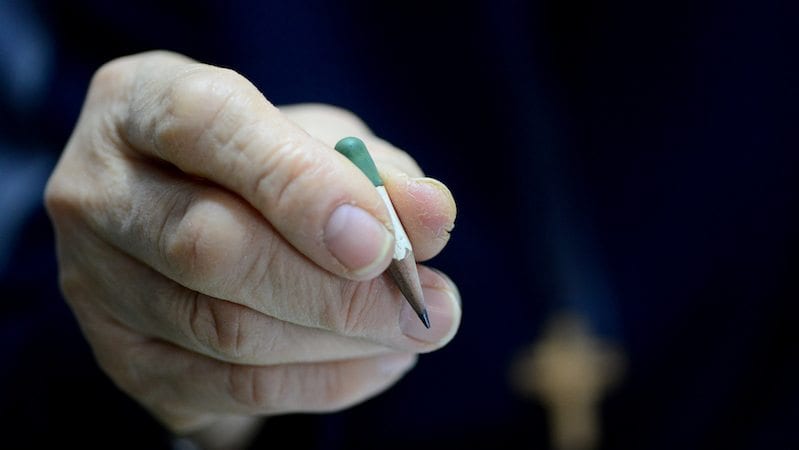In the midst of strikes and budget cuts, the fear of scarcity abounds in the teaching profession. Too many of us have been bitten by the “not enough” bug of those dark days. And while it’s true that too many of our schools are underfunded and that our profession is often undervalued, adopting an abundance mentality can make a big difference in how you see your job. Below are some tips to help change your perception.
Appreciate the supplies you do have.
Sometimes we don’t see all of the resources that we already have. Practice gratitude inside of your classroom during a quiet moment in your day. Literally open up your closets and cupboards and gaze at the supplies inside. It’s true that, at this point in the year, your glue sticks may not have caps and your pencils may be missing. But try to be thankful for the paper, magazines, manipulatives, and books you do have. Seeing all of the resources that are there, just waiting for you, may not only make you feel better, but it may jog your memory. Maybe you can use these materials to bring a cool project or activity to life.
Acknowledge others.
Another example of perceiving your teaching from a place of wealth is recognizing the awesome colleagues who surround you on a daily basis. People are a valuable resource. If someone helped you plan a lesson, notice their effort. Ask them how they manage to engage students in an area that may not be your forte but just happens to be theirs. Reach out and offer to help someone. We are all connected, and working with others places you in the middle of abundance.
Also remember to acknowledge the amazing students whom you share a space with daily. After all, if it wasn’t for our kids, we wouldn’t have a job. But more than that, young people can be so inspiring and honest. Save the drawings and sweet notes they give you and reread them on tough days. Watch them work and interact and be humbled by the tremendous effort they put forth every day.
Set the intention.
If there’s something you’d like to create with your students, whether it be for a lesson or a long-term project, set the intention. Visualize the process and the final product in your mind first. Then make a list of the supplies and money needed. Make it as real as possible in your mind and brainstorm how to make your goal come to fruition.
Don’t be afraid to ask.
If you need a resource, reach out to others. Start with your colleagues and family and friends. They may know of a grant or program that aligns with what you’re trying to create. Sometimes people may volunteer or give money because they want to put positive energy into the world. A colleague recently had a friend arrange for a choreographer to teach his students an African dance. All he did was ask. If your school allows it, consider posting your need on the school website. Social media is another good place to reach out. Sometimes people may not be able to help directly, but they know of a resource that will point you in the right direction.
Give freely.
It may seem counterintuitive, but go back to those closets. Is there something you have been hanging on to that you don’t need any longer? Give it away and let it become someone else’s treasure. Consider establishing a giving table at your school, if you don’t already have one. A giving table can be a table, counter, or space where people leave items for the taking.
Practice gratitude.
At the end of each day, think of a couple of things you are grateful for. This is especially important to do on days when nothing seemed to go your way. A teacher at my school has a gratitude journal. She jots down what she’s thankful for and keeps a record of these things throughout the school year. Whether you write down your blessings or simply reflect on them, the important thing is to establish a daily ritual.
By tweaking your perception to “I have enough/I am enough,” don’t be surprised if you soon start to see more all around you.
We’d love to know—what are your thoughts on having an abundance mentality versus scarcity mentality? Come and share in our WeAreTeachers Chat group on Facebook.


